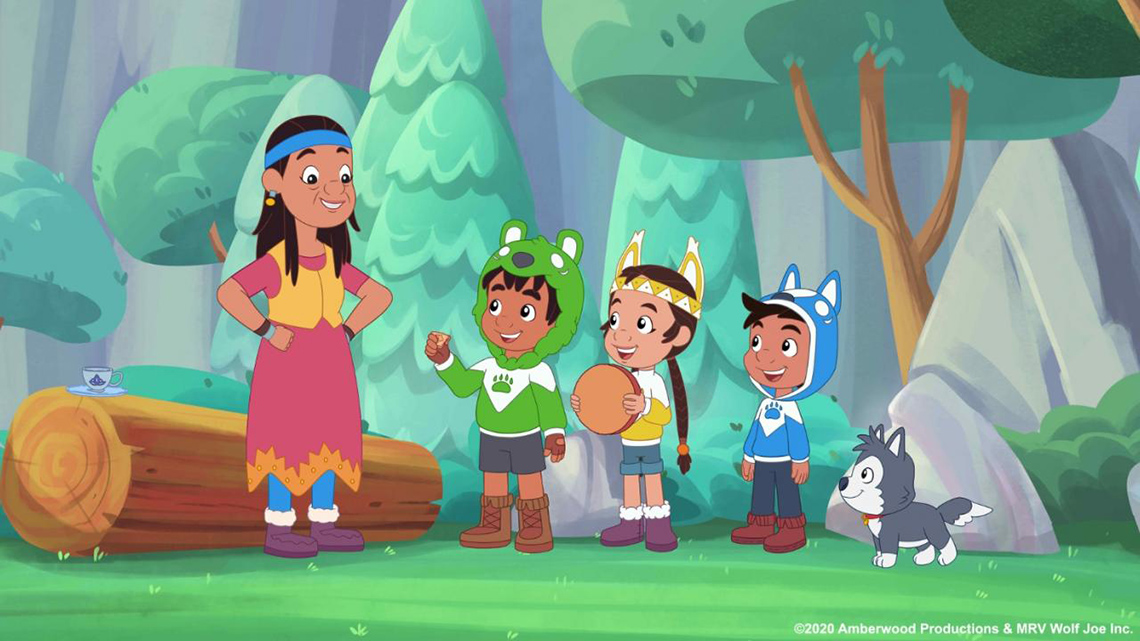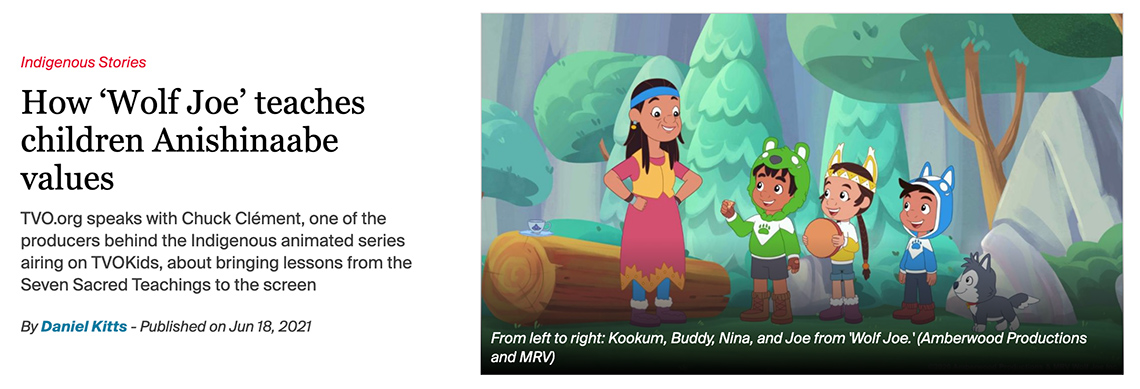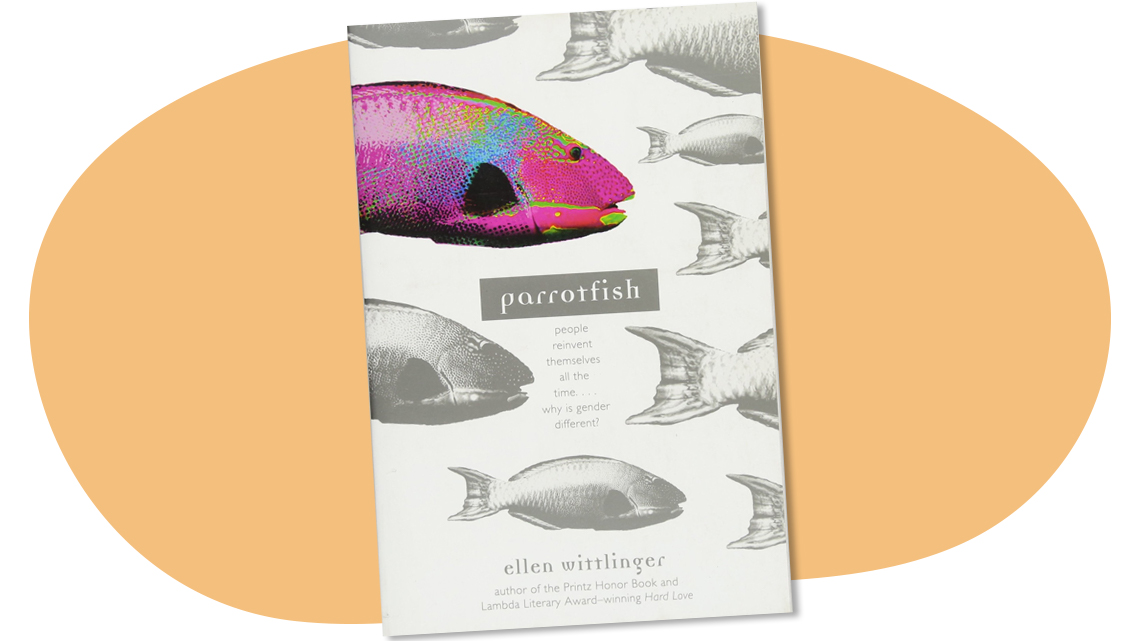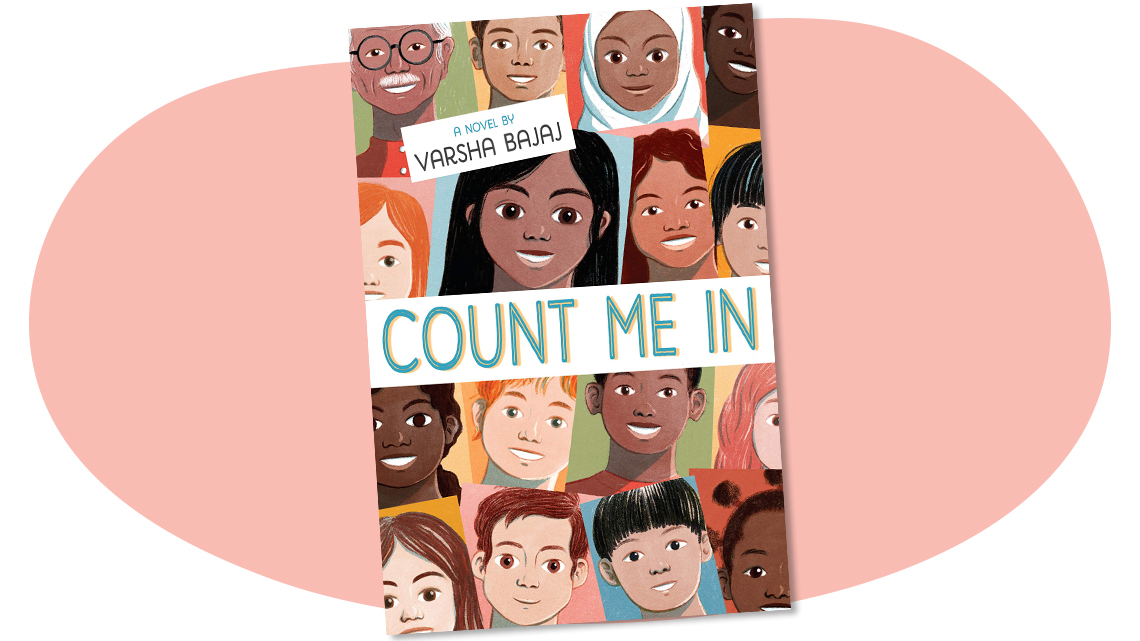Minds On
Discussion

We can learn a lot by applying our prior knowledge to understand new concepts and deepen our understanding. We can also learn a lot about an article or story from the title. We can make predictions on what we think the text will be about.
Explore this headline and image from a TVO article.

How 'Wolf Joe' teaches children Anishinaabe values
What do you think this article will be about? Why? What information did you use to make your decision?
Action
Task 1: Using titles and cover art
As readers, we make predictions about the text that we are engaging in. When we use clues from the text and our own knowledge and experiences to determine events to come, we are making predictions.
Authors choose titles and book cover art to give clues about a narrative. Two book covers are given as examples. Use clues in the title and the cover art to make a prediction about this text. The first example is Parrotfish by Ellen Wittlinger and the second example is Count Me In by Varsha Bajaj.
What information does the title give you to help make your prediction?
What information does the cover art give you to help make your prediction?
You can record your ideas using the method of your choice.
Task 2: Revising your prediction

Using your prediction of the article from the Minds On section, apply your new knowledge about predictions to revise your original ideas. Keep in mind that you can use cover titles, headlines, cover illustrations, and images to make predictions about a text. What new information did you use to revise your prediction?
Record your revised prediction using a method of your choice.
Consolidation
Checking your predictions
Now that you have revised your predictions, explore the article to reflect on your predictions.

Press TVO.org to access How 'Wolf Joe' teaches children Anishinaabe values.
TVO dot org (Opens in a new tab)Were your predictions correct or close to correct? Create a summary about the article and make references to your initial thoughts based on your predictions. You can write, type, use speech to text, or create an audio recording of your summary.
Did I include?
Reflection
As you read the following descriptions, select the one that best describes your current understanding of the learning in this activity. Press the corresponding button once you have made your choice.
I feel...
Now, expand on your ideas by recording your thoughts using a voice recorder, speech-to-text, or writing tool.
When you review your notes on this learning activity later, reflect on whether you would select a different description based on your further review of the material in this learning activity.

